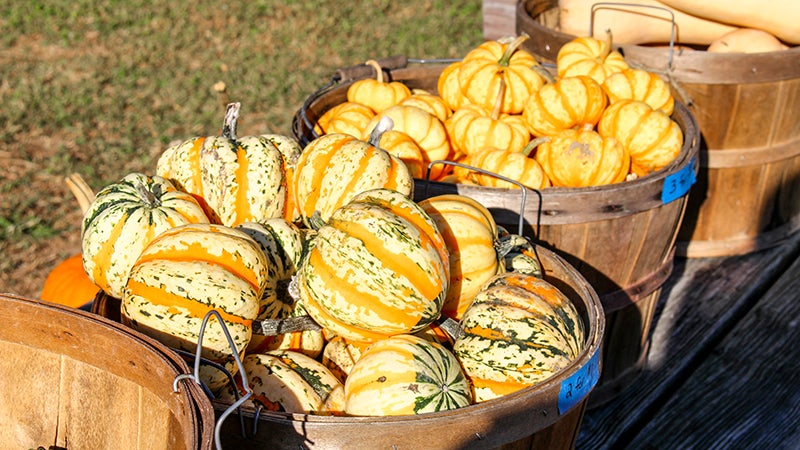Pumpkin crop thrives despite soggy season
Published 5:24 pm Tuesday, October 13, 2020
Despite tropical storm challenges, it’s still easy to find great pumpkins in and around Isle of Wight.
“I’d say the weather has been a little challenging in 2020 for us,” said Kevin Goerger. Along with his wife Catharine, they are the proprietors of Goerger Farms, a established, family-run operation in Windsor.
The Goergers planted about 4 ½ acres of pumpkins this year, a small operation by commercial standards. Still, sustained rains in August and September caused them to lose some of their pumpkin crop.
“We had one field where we basically picked zero, and some of that was topography related,” Goerger said. “It was a flat field and it got a lot of heavy rains week after week,” he said. “But we had some pumpkins on a hill near our house. They were on top of the hill and they did great.”
Unfortunately, due to the weather, “I’d say we lost maybe a third of our pumpkin crop just to drowning. It was fairly significant but at the same time, we had some wholesale buyers that backed out because of COVID,” Goerger said. “One big church that we deal with, they just shut down all their unnecessary events, but it worked out because we were a little bit short on the crop and then some of the wholesalers backed out on us. But retail sales have been up for sure.”
Virginia has about 400 pumpkin growers, according to the state Department of Agriculture and Consumer Services. In 2019, Virginia pumpkin farmers planted 5,700 acres of pumpkins and harvested 5,600 acres of the crop, which was valued at $16.4 million, according to the U.S. Department of Agriculture’s National Agricultural Statistics Service. That figure includes pick-your-own farms and wholesale growers, according to state officials.
To acknowledge the work of the state’s pumpkin growers and to recognize the value of pumpkins to the Virginia economy, Gov. Ralph Northam proclaimed October Virginia Pumpkin Month. “We love celebrating our pumpkin farmers here in Virginia,” Bettina Ring, the state’s secretary of agriculture and forestry, said in an announcement. “They have found increasingly innovative ways to both grow and market their products, and consumers have responded enthusiastically.”
Goerger agreed with that perspective. After months of social distancing, which prompted the cancelation of many family-friendly and fun activities, people seem eager to get outside for familiar and fun fall activities like browsing pumpkin patches, and that consumer interest is translating to strong sales at his family’s farm.
“We’re not huge,” Goerger said, but with more than four acres, “it takes a little bit of time to keep up with.”
Southwest Virginia’s higher elevations and cooler temperatures offer ideal pumpkin growing conditions. Cultivating the crop in Southeastern Virginia, where there’s lots of high heat and humidity, is more challenging. Regardless of where the pumpkins are, “it’s real labor intensive, particularly picking,” Goerger said. “There’s really no machinery to help. So everything’s just grunt work putting it in the truck.”
Fall crops are “about 80% of what we do,” in terms of business. “In the summer, we grow sweet corn and tomatoes and we actually sell them right in our front yard,” he said. “That was really good for us this summer. We had good strong sales on that.”
The Goergers have and continue to operate most of their sales on the honor system.
“So we’re not around to greet people coming and going from the patch,” Goerger continued. “They just kind of do their own thing. We haven’t had any issues.” In short, “we’re getting more people that usual but we’re not being overwhelmed,” he said.
Michael Wallace, a spokesman for VDACS, encouraged people to visit virginiagrown.com to find farms, roadside stands and farmers markets that are offering fun fall activities like pumpkin patches and corn mazes and to call ahead to verify how each farm is handling visitors.
“With the coronavirus pandemic, a lot of farmers have changed the way that they operate and limited access onto their farms.” But despite the changes, now is “a great time to visit a farm,” Wallace said.





